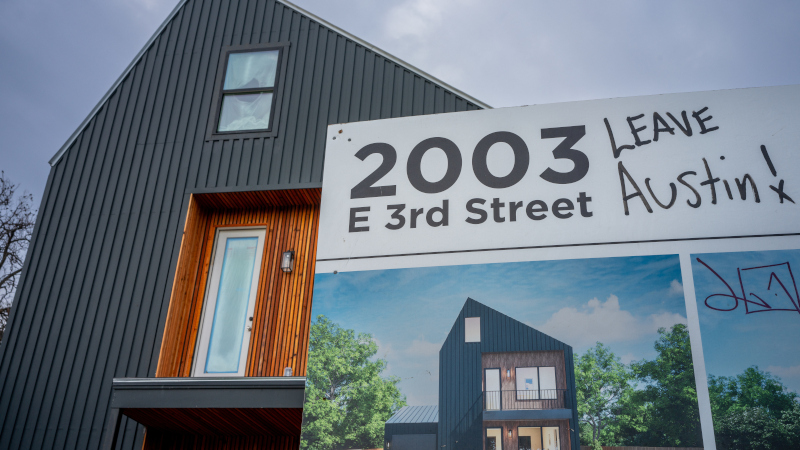To alleviate the crippled market conditions today would most likely require state imposed moratoriums on corporate home purchases, a moratorium on foreign purchases, not to mention the direct removal of illegal migrants.
In a new poll conducted by the Financial Times and Michigan’s Ross School of Business, data shows there is a rare bipartisan agreement among Republicans and Democrats – both sides believe that there are no housing advantages for the their political opponents and 70% of leftists, independents and conservatives alike rate affordability as one of their top three concerns.
In other words, Americans disagree on almost everything else, but they all recognize that most of them are in deep trouble when it comes to keeping a roof over their heads.
It’s not just the math, it’s the daily drain on people’s pocketbooks that makes the problem so undeniable.
While the Biden Administration has spent the better part of the past year claiming that “inflation is going down” the reality has been far more bleak. Surveys also show that 62% of homeowners has struggled at least periodically in the past year to make their mortgage payments and half of all renters also reported difficulty keeping up with monthly payments. Over 22% skipped meals, 20% worked extra hours and 20% sold belongings to pay their housing costs on time.
Disturbingly, 60% of poll respondents who make $100,000 or more per year also ranked housing costs at the top of their list of worries going into 2024. Meaning, the crisis is spreading well beyond low income families and is dragging down the middle class.
Low income, fixed income and middle-income renters are all facing challenges. The market has become so disjointed that middle-income earners are finding it nearly impossible in most states to find homes in their price range, either to buy or to rent.
The average middle class income is $58,000 to $98,000 annually. The average yearly cost of a family home rental is $25,000 ($2100 a month and nearly half of a single earner’s income on the low end of the middle class average). This greatly supersedes the common 30% rent rule which suggests that housing should not eat more than 30% of a renter’s salary. In 2019 the average monthly rent for a home was $1400; that’s a 50% increase in the span of only four years.
In order to safely afford the monthly median home rental price of $2100, a tenant must make over $6000 after taxes per month. This cuts more than 50% of the population out of the market. It’s not just the cost of housing, though, there’s also a major crisis in availability.
Across the US there is a shortage of at least 7.2 million homes affordable and available to renters with extremely low incomes. Extremely low-income renters face a shortage in every state and major metropolitan area. Middle-income housing is vanishing; known as the “missing middle”, this portion of the market has been bought out and inflated to the point that elasticity in prices has been crushed right along with home buyers and renters. That is to say, if you make less than six figures then you are quietly and quickly being strangled out of housing access.
But how do we solve this ongoing problem? Government rent controls won’t do anything other than create a larger shortage by scaring property owners out of the rental market. The Federal Reserve’s (supposed) attempts to use higher interest rates to deflate the bubble without triggering consequences to the greater economy have utterly failed. The conundrum is that the biggest property buyers in the country are supported by the central bank and thus they remain unaffected by higher rates.
These are massive corporate buyers like Blackstone and Black Rock which invest in companies that buy US houses. Black Rock by extension owns a stake in nearly 7% of the nation’s total rental properties. In 2023 corporate investors accounted for 27% of all family home purchases. Even in the case of house flipping, corporate purchases on a large scale tend to drive up prices for everyone else.
Then there’s the issue of illegal immigration which is adding millions of “asylum seekers” every year to the population; all of those people are looking for housing. With government programs and subsidies helping them they eventually find that housing, allowing them to eat up another piece of the pie. This leaves legal citizens in the lurch and struggling with low availability.
Finally, there’s general inflation. Building costs for materials and labor have skyrocketed, meaning building new houses might help over many years to stabilize the market but it does not solve the immediate supply crisis and the inflation associated with it. Americans don’t need more expensive houses, they need more affordable houses.
To alleviate the crippled market conditions today would most likely require state imposed moratoriums on corporate home purchases, a moratorium on foreign purchases, not to mention the direct removal of illegal migrants. Taking action on all three would free up supply and at least give US citizens room to breath by cutting back on their top most expensive necessity. At bottom things cannot continue the way they have been otherwise the system can and will break under the pressure, leading to even worse economic outcomes.
Transhumanist Plan to Exterminate All Humans Now Public Information


